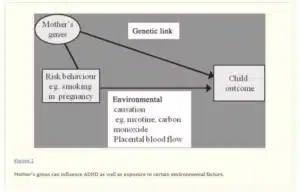Hyperbaric oxygen therapy (HBOT) is a medical treatment that involves breathing pure oxygen in a pressurized chamber. This therapy enhances the delivery of oxygen to tissues, promoting healing and offering potential benefits for various medical conditions. Understanding the mechanisms and efficacy of HBOT is essential for those considering or undergoing this treatment.
Background—This paper outlines therapeutic mechanisms of hyperbaric oxygen therapy (HBOT) and reviews data on its efficacy for clinical problems seen by plastic and reconstructive surgeons.
Results—Principal mechanisms of HBOT are based on intracellular generation of reactive species of oxygen and nitrogen. Reactive species are recognized to play a central role in cell signal transduction cascades and the discussion will focus on these pathways. Systematic reviews and randomized clinical trials support clinical use of HBOT for refractory diabetic wound healing and radiation injuries; treatment of compromised flaps and grafts and ischemia-reperfusion disorders is supported by animal studies and a small number of clinical trials, but further studies are warranted.
FAQs
Q1: How does hyperbaric oxygen therapy work?
A1: HBOT involves exposing the body to increased atmospheric pressure, typically in a hyperbaric chamber, while breathing pure oxygen. This increases the oxygen content in the blood, enhancing its availability to tissues throughout the body.
Q2: What are the mechanisms behind the efficacy of HBOT?
A2: HBOT improves oxygen delivery to tissues, stimulating the body’s natural healing processes. It reduces inflammation, promotes blood vessel formation, and helps fight infections. Additionally, it can aid in the resolution of gas bubbles in conditions like decompression sickness.
Q3: What medical conditions can benefit from HBOT?
A3: HBOT is used to treat a range of conditions, including non-healing wounds, diabetic foot ulcers, carbon monoxide poisoning, decompression sickness, and radiation-induced tissue damage. Research is ongoing to explore its potential in other medical applications.
Q4: Is HBOT safe and well-tolerated?
A4: When administered by trained healthcare professionals in approved facilities, HBOT is generally safe. Common side effects may include ear barotrauma, temporary changes in vision, and oxygen toxicity, but these are typically mild and transient.
Conclusions
Clinical and mechanistic data support use of hyperbaric oxygen for a variety of disorders. Further work is needed to clarify clinical utility for some disorders and to hone patient selection criteria to improve cost-efficacy. Recently, mild hyperbaric oxygen of up to 1.5ATA pressure has allowed the possible and safe use of HBOT in homes.




